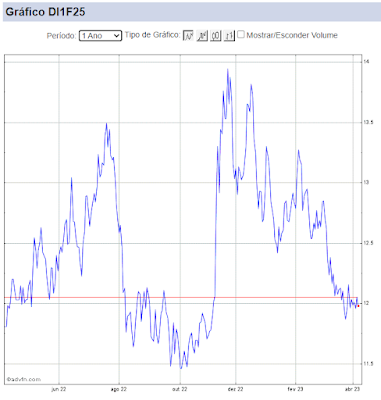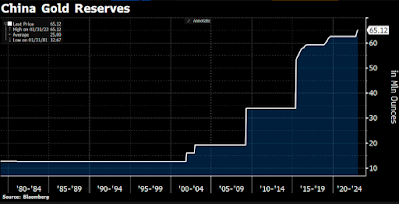China em Foco.
Os dados de agregados monetários na China mostraram sinais de
que a política monetária no país seguiu mais apertada em dezembro e deverá
permanecer assim neste início de ano*. Estes dados estão em linha com a minha
tese de que alguns sinais recentes, como a sinalização do BoJ no Japão e as
recentes medidas na China, apontam para um movimento mais coordenado e, talvez,
mais agressivo (do que o esperado anteriormente, mas não necessariamente deixando
de ser gradual) de normalização monetária nas economias desenvolvidas.
Estes sinais não precisam ser necessariamente negativos para os
mercados financeiros globais, mas certamente terão reverberações sobre os
ativos de risco. A alta recente do EUR é um exemplo disso, assim como o movimento
de abertura de taxa de juros nos EUA.
Reforço que o pano de fundo segue relativamente inalterado, mas
acumulam-se sinais que merecem atenção cada vez mais especial. Vejam mais
detalhes aqui: https://mercadosglobais.blogspot.com.br/2018/01/alguns-sinais-merecem-atencao.html
e https://mercadosglobais.blogspot.com.br/2018/01/the-winds-are-changing.html.
*Segundo a Nomura:
M2 growth resumed its decline, falling
to 8.2% y-o-y in December from 9.1% in November, a new historical low despite
the positive base effect (Consensus: 9.2%; Nomura: 9.4%). M1 growth also
moderated by 0.9 percentage points (pp) to 11.8%. New RMB deposits were
-RMB792.9bn, weaker than the historical average in December.
New aggregate financing moderated to
RMB1.14trn in December from RMB1.60trn in November, weaker than market
expectations, but largely in line with our forecast (Consensus: RMB1.5trn;
Nomura: RMB1.15trn). For full-year 2017, aggregate financing increased by
RMB19.44trn, higher than the incremental rise in 2016, but growth in the stock
of aggregate financing moderated to 12.0% y-o-y from 12.8% in 2016. If
outstanding local government bonds are included, growth in the stock of
augmented aggregate financing moderated to 13.7% from 16.4%, as net issuance of
local government bonds was lower in 2017 than in 2016.
Shadow banking activity made a large
contribution to aggregate financing in 2017, as its outstanding growth picked
up to 15.1% in 2017 from 4.9% in 2016. We believe it could be due to financing
deleveraging which has encouraged funds flowing to the real economy from
financial markets. Growth in bond financing, meanwhile, slowed significantly to
2.5% in 2017 from 22.5% in 2016, because of stricter regulations in the bond
market last year.
Growth in outstanding RMB loans eased
to 12.7% y-o-y in December, with new RMB loans down significantly to RMB584.4bn
from RMB1,120bn in November (Consensus: RMB1000bn; and Nomura: RMB750bn). New
loans to the household sector and corporate sector nearly halved in December
from November. For full-year 2017, new RMB loans totalled RMB13.53trn from
RMB12.6trn in 2016, with outstanding growth slowing.



Comentários
Postar um comentário